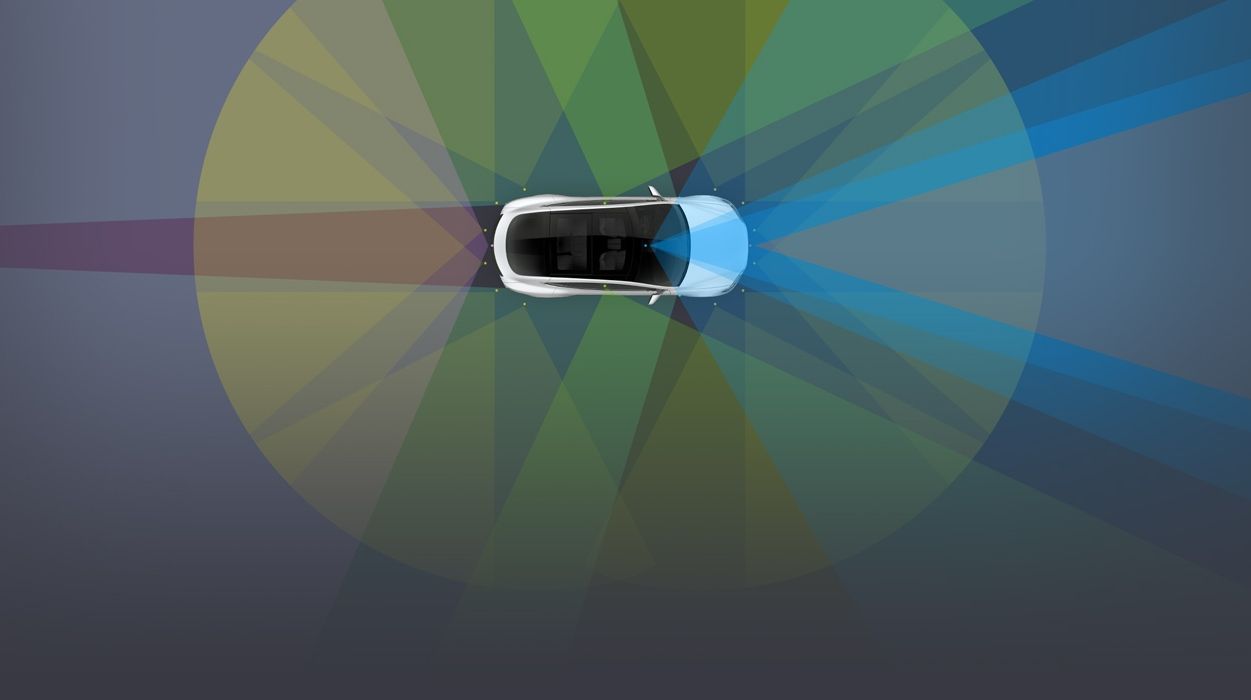Tesla CEO Elon Musk has finally pinned down a date for the arrival of the 8.1 version of the automaker’s “Enhanced Autopilot” software suite, replying to a tweet from a new Tesla Model S owner and saying the new software will go live in “about three weeks” and that its features will be rolled out “incrementally in monthly releases.”
Musk’s response is not as specific as we’d like it to be, but it does fit into the company’s previous statement that the autonomous functions to the new system would only be enabled as soon as the new Autopilot hardware has been validated and calibrated through real-world driving by owners of the Model S and Model X. The automaker’s “Tesla Vision” system is expected to enhance the car’s autonomous driving features and leading to it being capable of Level 5 full autonomous driving by 2018.
To get there, Tesla, according to Musk, will be making monthly updates to the system to add new features into the mix and restore old features like lane keep assist, self-parking, active cruise control, and self-parking. All these features were disabled when Tesla introduced Autopilot 2.0 last month, saying that it was done to “further calibrate the system.”
Now that these features are expected to return in the coming weeks, the clock now starts for Tesla to see through its goal of taking Autopilot 2.0 to levels that its predecessor couldn’t attain. The electric carmaker has never been the type to shy away from setting lofty goals for itself and it did so during Autopilot 2.0’s “surprise” announcement last October when it laid out a timetable to get Tesla models built in 2016 to advance to level 3 autonomy in the coming months, before moving on to level 4 autonomy and then to level 5 autonomy in two years’ time.
That said, these updates are still “subject to regulatory approval” so that’s another angle that owners of the Tesla Model S and Model X should pay attention to once the first wave of Autopilot 2.0’s software updates goes live.
Continue after the jump to read the full story.
There's a lot riding on Autopilot 2.0
While there’s still a sense of confusion as to what Tesla has in store for its new Autopilot 2.0 system, the general belief is that the automaker is pushing to roll out these updates as quickly as it can to get the system up to speed and running on level 5 autonomy by 2018. On that note, you have to give credit to Tesla for being pro-active in sticking to its objectives.
But there is a another question here that a lot of people have been asking: how is Autopilot 2.0 going to be different from its predecessor? More importantly, is it going to be able to fix the issues that plagued the first system? Whether Tesla admits it or not, the public perception of the previous-generation Autopilot system wasn’t as rosy as the company hoped it would be. That’s a big reason why Autopilot 2.0 is a huge deal for Tesla; its success – or failure – could shape the company’s standing moving forward.
I’m generally optimistic about these types of things so I’m going to be open to what Autopilot 2.0’s potential is going to be. I’d like it to be successful because I want to see legitimate breakthroughs in the pursuit of autonomous driving technology. A fully functioning Autopilot 2.0 system is not only going to be a boon for Tesla; it’s going to be a breakthrough for the entire auto industry. It’s going to show what’s really possible if self-driving technology is functioning the way it’s supposed to.
So the clock starts for Tesla three weeks from now when Autopilot 2.0 goes live. It’s going to get incremental updates on a monthly basis to get its features up-to-speed with the cars so a little bit of patience on our end is going to be important too. But rest assured, Autopilot 2.0 is going to make-or-break for Tesla, and the company is probably aware of that too.

